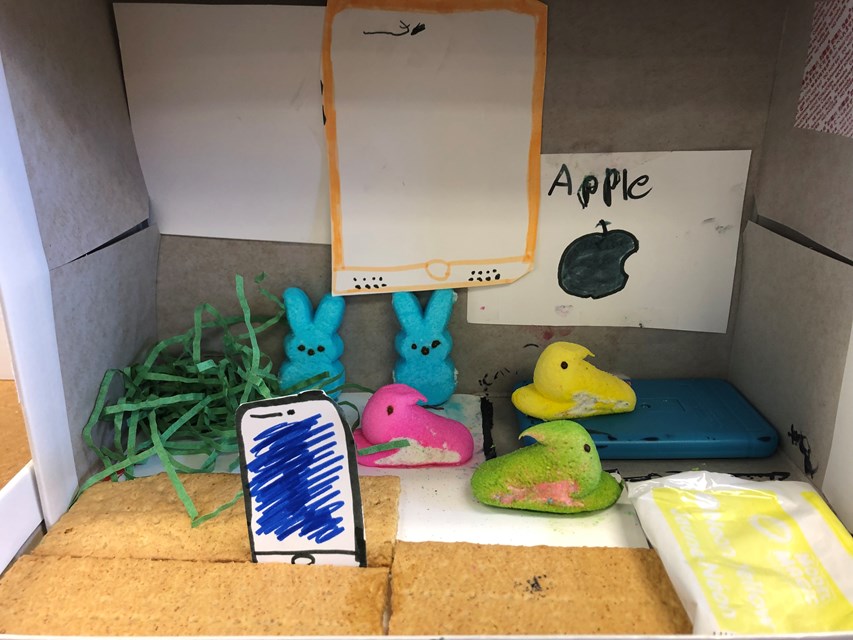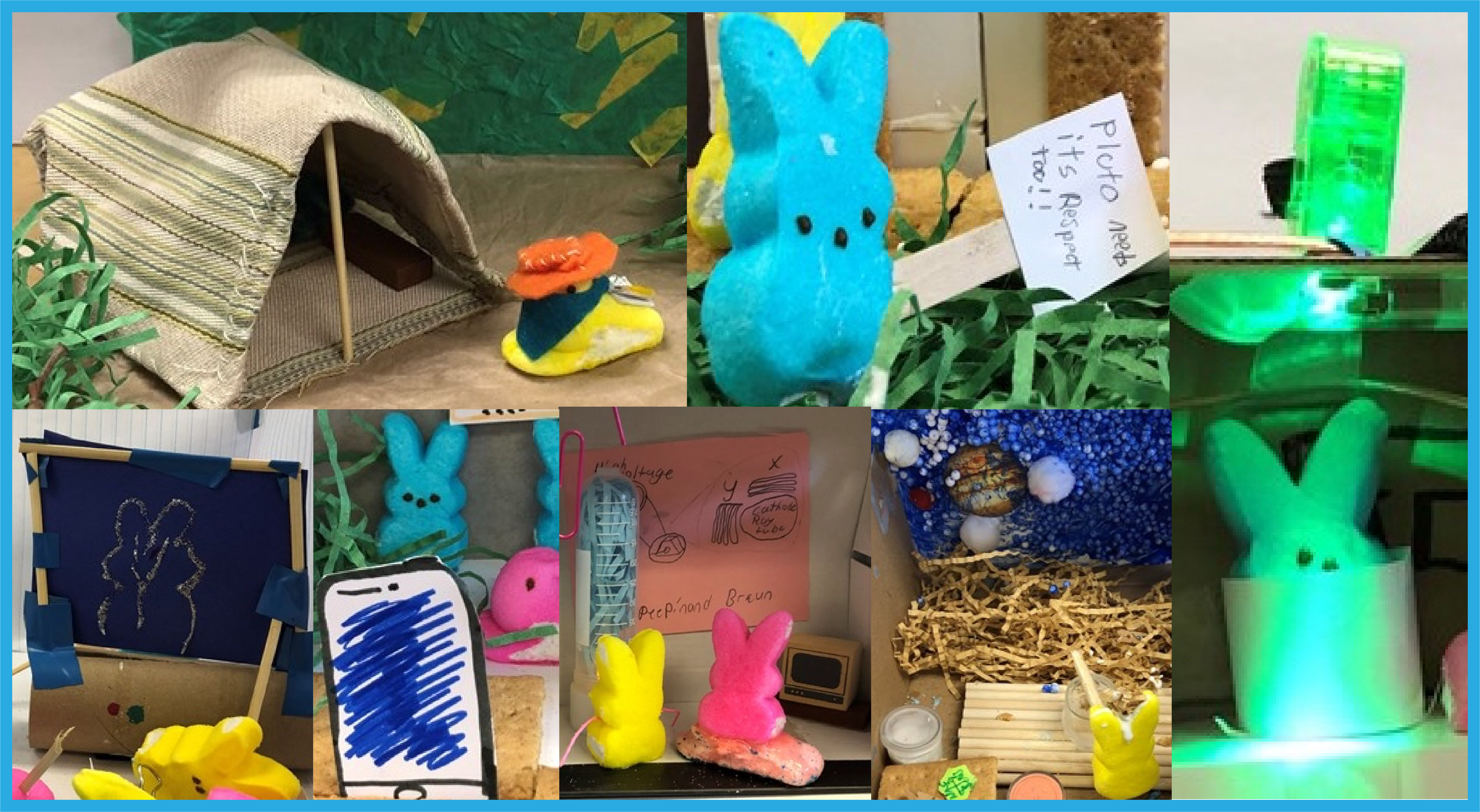
How did you hear about the Peeps diorama contest?
A parent in the class sent the link last fall. He has a PhD in geology and he already had his idea: He was the “Graham Canyon” guy. He made his John “Peepsly” Powell diorama in class with the kids.
What made you decide to enter?
What we do in school right now is so rigorous and so focused on testing. We need to do that, but it does takes away some of the opportunity for creativity. This project gave them the opportunity just to be creative. They had to think ahead about the scientist they wanted to feature and how they could do that in the form of a diorama.
The Peeps dioramas also tie really well into the Language Arts curriculum, because they had to write essays about their scientist in conjunction with doing the dioramas. It was also an opportunity to push them to achieve those standards independently.
How did the students choose their scientists?
I gave them free reign on the scientists—they were able to pick anyone they wanted to. We had some great conversations about things like, “Is computer science a science? Was Steve Jobs a scientist?” From there, they started to sketch their designs, all on their own. Then on the actual diorama day, we did it like on one of those TV game shows—they had three hours to construct their dioramas.
There are actually 30 students in the class. They all did dioramas, but some chose not to submit theirs to the contest. In some cases their designs didn’t come out the way they wanted. Other kids just felt too shy. And that’s fine—it wasn’t about winning, it was about the experience.
Where did the supplies come from?
I supplied the Peeps—we had an unlimited supply of Peeps. In fact, we still have a lot of Peeps in the closet. I also went to the Dollar Store and bought other supplies for the kids to use. And then students also brought supplies of their own. Some of them purchased some supplies, but a lot of them they made.
What do you hope students learned from the activity?
As a teacher, my background is in science, and I just want them to know that there are so many different paths they can take into the sciences. I also think it exposed them to technology, knowing that there are all these science blogs online where they could go for information. They went online to research. We have a no-Wikipedia rule, so I steered them toward educational and government sites.
What challenges did the students run into as they created the dioramas?
Well, it was sticky!
Then, the students wanted to eat the Peeps. They were limited to two: one at the beginning and one at the end.
Some kids also had some structural issues—the Peeps were not as large as some of the materials they brought in. And then some of the kids had to figure out technical things like how to get the lights to work.
Finally, time management was a challenge—they had to figure out how to get everything done in three hours.
Why do you think Peeps dioramas work as an educational tool?
I think the Peeps led us in a direction that we wouldn’t have otherwise tackled this year—writing about a scientist is not part of our usual curriculum. It opened a new avenue for them to learn about science. I would definitely do it again—they really enjoyed it.
What impressed or surprised you the most about the students’ dioramas?
I think what impressed me most was their ingenuity. Students weren’t given much in the way of supplies. Some brought a few things from home, but many used what we had in the classroom to create their dioramas. I was most surprised by how engaged students were in the project and how knowledgeable they were regarding their scientist or inventor and their contributions to society.
Can you share some stories about the kids’ learning experiences in making the Peeps dioramas?
Sure! Here are a few …
Lucy came to school with a few scraps of fabric and twigs she cut from plants in her backyard. She had a vision for her Jane Goodall diorama and she was determined to make it come to life. I love how she was able to create the ledge at the top of the diorama and how it was supported by the branches. She also paid incredible attention to detail—even down to the little journal and pencil she had glued to the back of her Peep. (Read Lucy’s essay here.)
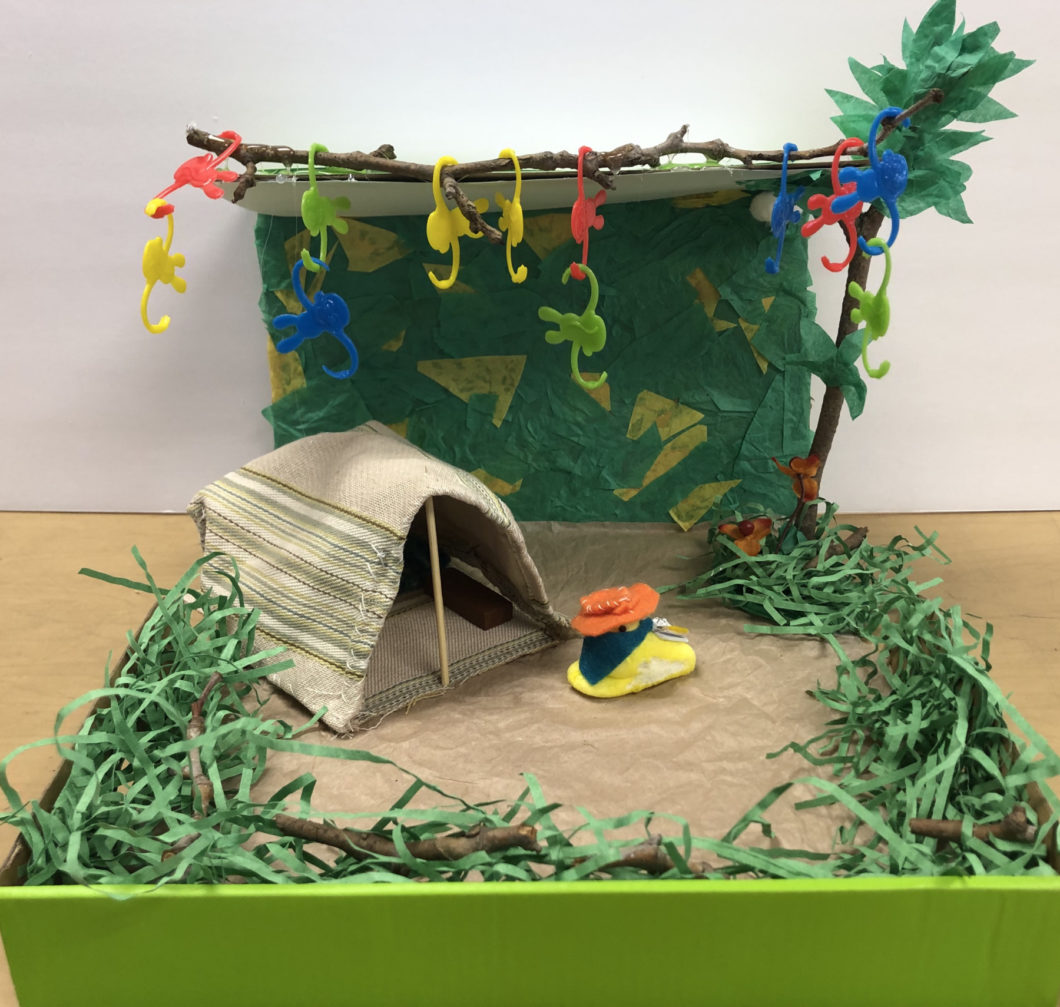
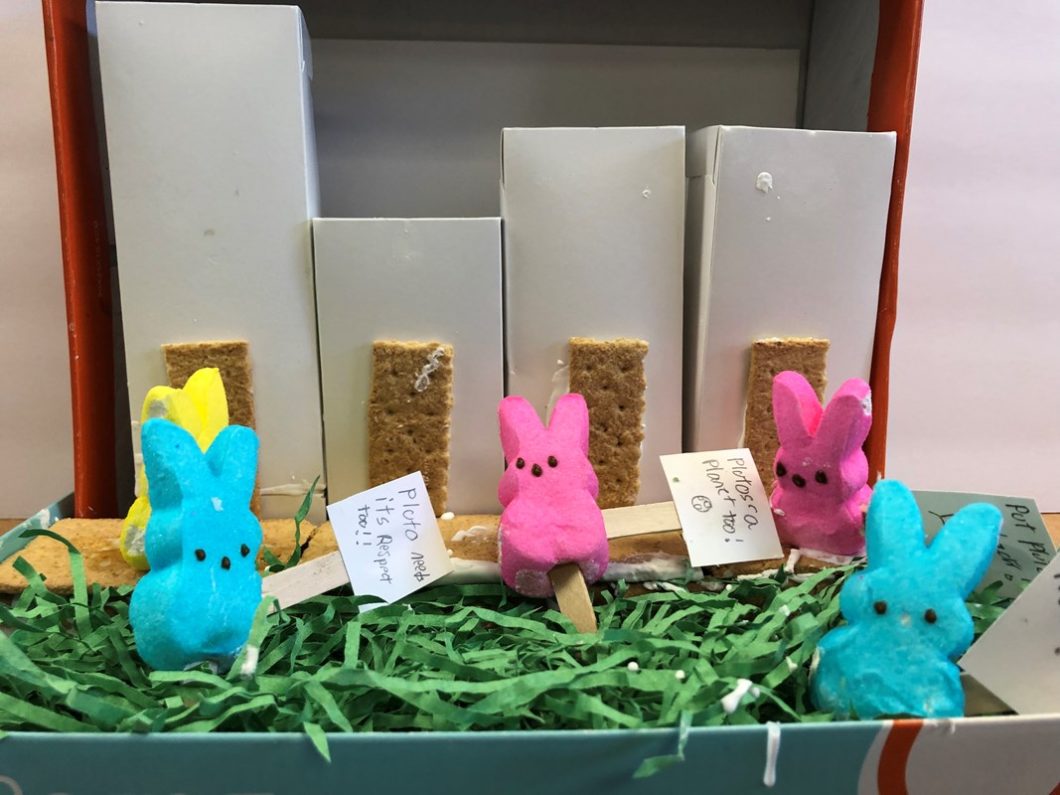
Beatrix went all out for her project on Peepiter. She was adamant that she had to paint millions of tiny Styrofoam balls for her project and they took over the classroom! By the end, her hands were blue and they were covered in these sticky, gooey balls. It actually led to a productive conversation on Styrofoam and its impact on the environment. (Read Beatrix’s essay here.)
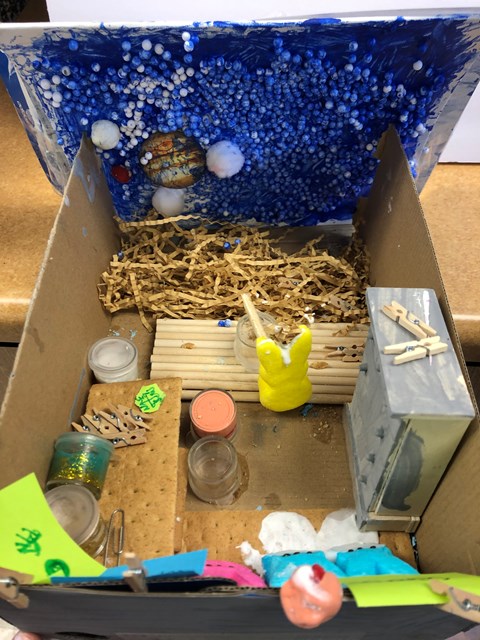
Milo is really interested in cameras, film, and computers. So, it didn’t come as a surprise that he would pick a scientist that had something to do with this technology. I was really impressed that he challenged himself to find a scientist that wasn’t popular or mainstream. And when you talked to Milo about his project, he could provide a specific reason he included each component in his diorama. (Read Milo’s essay here.)
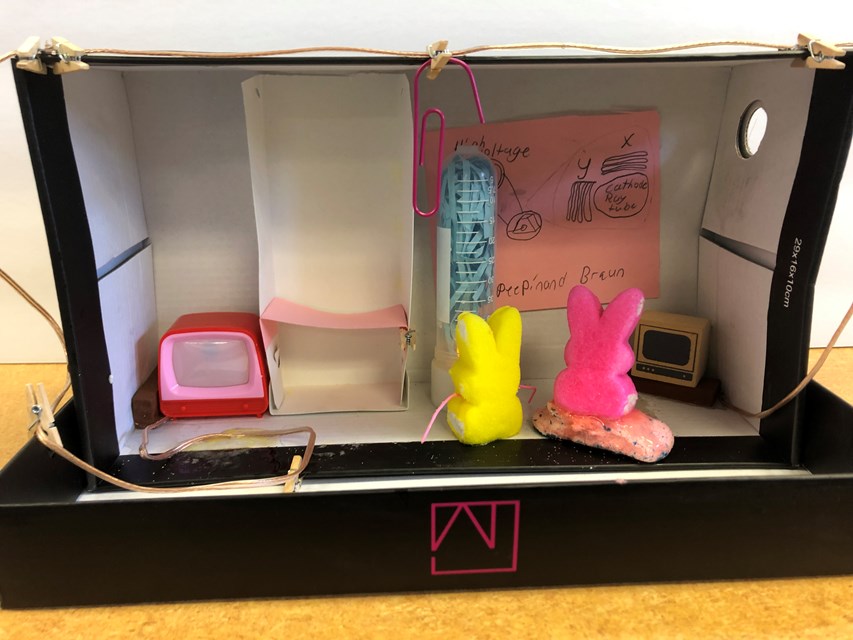
Alex brought in a lot of wires, random bolts, and even a lightbulb for his diorama. I wasn’t quite sure where he was going with his design in the beginning, but I am really proud of how hard he worked and how well it turned out. He had studied a chemist who worked on nuclear fission. Alex envisioned his diorama lighting up (which he accomplished) and he even included a nuclear explosion in the background. (Read Alex’s essay here.)
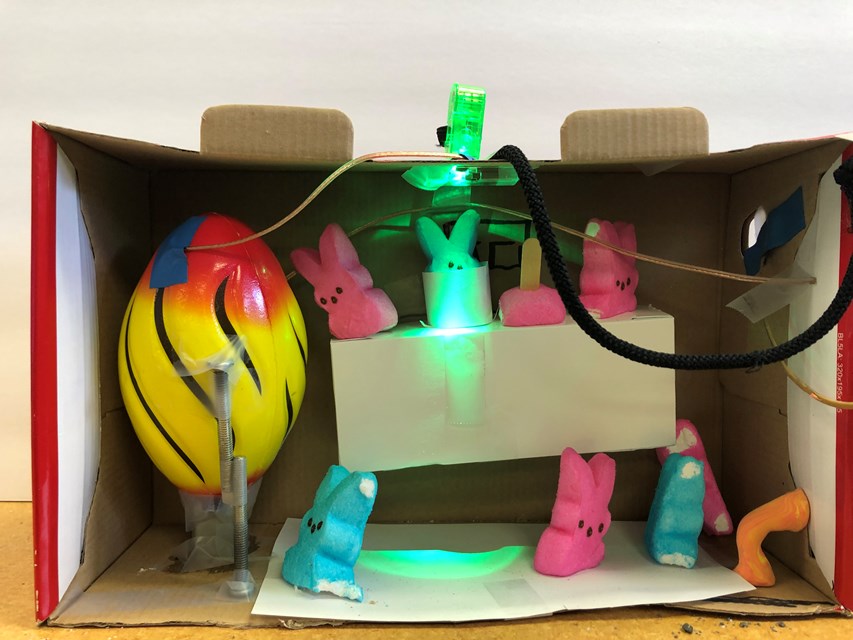
Jacob created the little X-ray on black paper with a crayon. He told me right when we began building that he needed to have an x-ray in his diorama and to please find him some black paper. And I love how he created a classroom of Peep students and how they were all facing the instructor. He did a lot with very little in the way of materials. (Read Jacob’s essay here.)
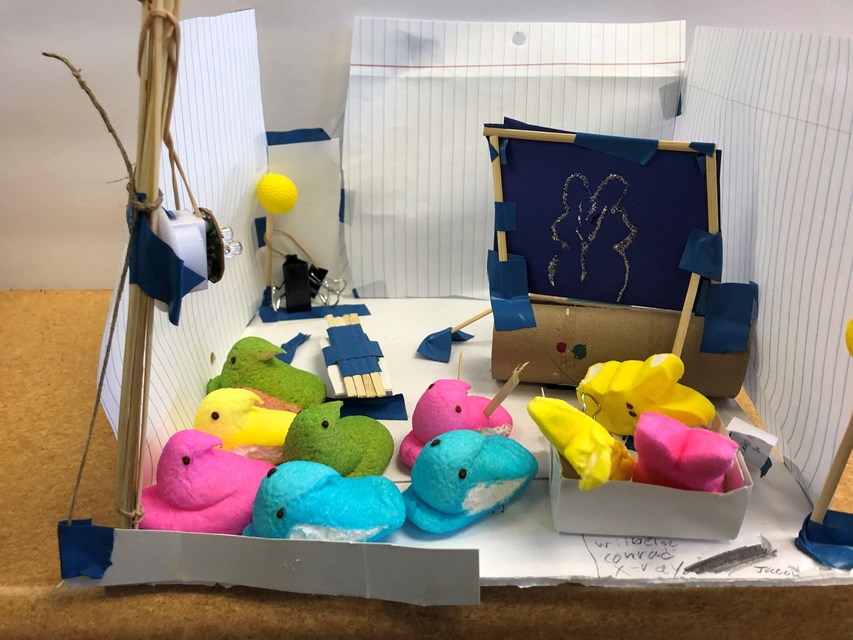
Eli’s project triggered a discussion with some students on if computer scientists were really “scientists.” Eli also struggled with scale in his project. He had a little pretend phone but when set next to a Peep, it was enormous. He had to determine if using the prop was more important than trying to stay in scale. I thought this was an interesting problem that I hadn’t anticipated. (Read Eli’s essay here.)
